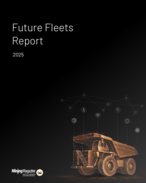COSFLOW was successfully developed as a result of a joint research project between Japanese research groups New Energy and Industrial Development Organization (NEDO) and JCOAL, and CSIRO, Australia. NEDO’s annual report for the 2003 Japanese financial year, outlined recent software trials.
COSFLOW couples fluid (gas and water) flow through a porous medium with rock deformation and stress. The software was applied to the modelling of the complex behaviour of rock, water and gas flow at Anglo Coal’s Central Colliery, in Queensland. Gas drainage performance was also assessed.
COSFLOW was applied to estimate gas make from inseam drainage holes at Central Colliery; gas content following inseam drainage; gas inflow during roadway development; gas inflow into the ventilation system during longwall retreat; and gas inflow into post-drainage holes during longwall retreat.
The simulations follow the actual sequence of pre-drainage, roadway development, longwall mining and post drainage at the site. Gas flow simulation at any stage of mining was based on the conditions created by previous activities such as pre-drainage and/or mining of an adjacent longwall panel.
The annual report said in all simulations at Central, the results matched well with actual measurements in longwall panels in terms of gas flow rates and trends.
“The results of these simulations demonstrate that COSFLOW is capable of detailed simulation and prediction of rock deformation, and water and gas flow associated with longwall mining,” NEDO annual report said.
“Unlike uncoupled (fluid flow only) commercial codes, COSFLOW predicts a change in pore pressure near an excavation due to the volumetric expansion of the neighbouring rock, and its impacts on gas desorption and flow.”
NEDO said simulations of this kind not only provide estimates of mine gas emissions in various geological and mining conditions, as well as indicating the performance of drainage methods, they also give an insight into the gas flow mechanisms and controlling factors that will assist optimisation of gas and outburst control measures.
COSFLOW is also applicable to coalbed methane (CBM) production predictions, and is able to incorporate detailed geological structures and hydrogeological conditions in the simulation models. This provides additional information to assist with feasibility studies and operation planning of CBM projects.
In addition, COSFLOW has been tested recently for its performance in mine subsidence and mine water simulations. NEDO said the results showed that COSFLOW is superior to conventional methods in its ability to simulate the subsidence and ground water processes in various topographic, geological and mining conditions.
Other developments during the year included the assessment of two ventilation packages for using in conjunction with COSFLOW. These were the VENTSIM software, development by CMS Software and KAZEMARU, developed in Japan.
Both programs produce acceptable results of airflow and methane concentration but KAZEMARU was more suitable to be used with COSFLOW. This was because VENTSIM does not accept methane gas emission rate as an input, while KAZEMARU does. Also, CSIRO has access to the source code for KAZEMARU.























